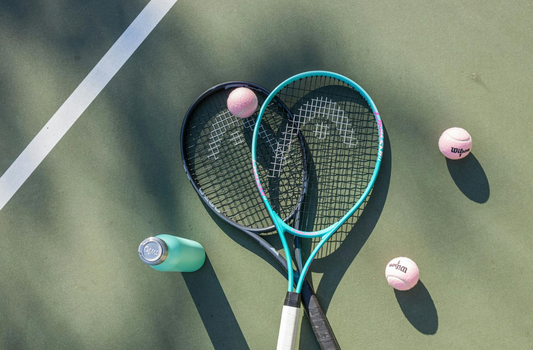Miscellaneous Tennis Rules for Common Recreational Tennis Scenarios:
The Code is the USTA’s guide to the unwritten rules in tennis that are not part of the ITF’s rules. In it, some guidelines for situations that commonly occur in recreational tennis are addressed. They fall into a number of different categories, and they may seem a bit arbitrary, but we’ve probably all come across some of the situations listed below.
Warm-ups
- Warm-ups are optional. If you’re playing singles and your opponent doesn’t want to warm up with you, she forfeits the right to warm up, and you can find someone else to warm up with you. If you’re playing doubles you can warm up with your partner while your opponents do the same.
- All warm-up serves should be taken before the match begins. Players should not ask nor be allowed to take practice serves right before they begin serving in the match.
Serves

- When a serve is obviously out, the receiver should not return the ball over the net. If it happens, it does not reverse the fault call, but it’s considered rude and possibly a form of gamesmanship.
- When a server’s second service motion is delayed by the receiver or is interrupted by something, such as a ball rolling onto the court, the server gets two serves. If a ball rolls onto the court between serves, then it’s not considered an interruption.
Ball Issues

- If an opponent asks a player to remove a stray ball from her side of the court, she must honor the request.
- If a ball rolls onto the adjacent court, a player shouldn’t go retrieve it or ask a player from the adjacent court to return it while a point is being played. Wait until the point is over.
- When a player from an adjacent court wants to return a ball, she should wait until the point is over on the court where the ball is being returned. She should return it directly to one of the players, preferably the server.
- If a player catches a ball in play before it bounces, the player loses the point regardless of whether the ball was going in or out.
Clothing & Equipment

- If clothing or equipment other than a racquet malfunctions because of something that was not caused by the player, play may be suspended for a reasonable period, and the player may leave the court after the point is over to fix the problem.
- When playing recreational tennis, if a racquet or strings break during a point, a player may get a replacement. Be aware that if that happens in a sanctioned tournament, the player can still get a replacement without penalty, but she is subject to code violations for delay under the Point Penalty System. If it takes the player too long to grab a replacement racquet (perhaps because the racquet isn’t in her bag on the court), she might receive a warning for the first offense, and then she’ll lose a point for each additional penalty related to a delay of game.
- Towels should be placed on the ground outside the net post or at the back fence. Clothing or towels, or anything else for that matter, should never be placed on the net.
Conclusion
While these guidelines may not affect the score or outcome of a match, they help ensure that a game runs smoothly and fairly. If you review these guidelines along with our previous rules blogs, you’ll be the rules expert at your local club!
Adapted from The Code: The Players’ Guide to Fair Play and the Unwritten Rules of Tennis




